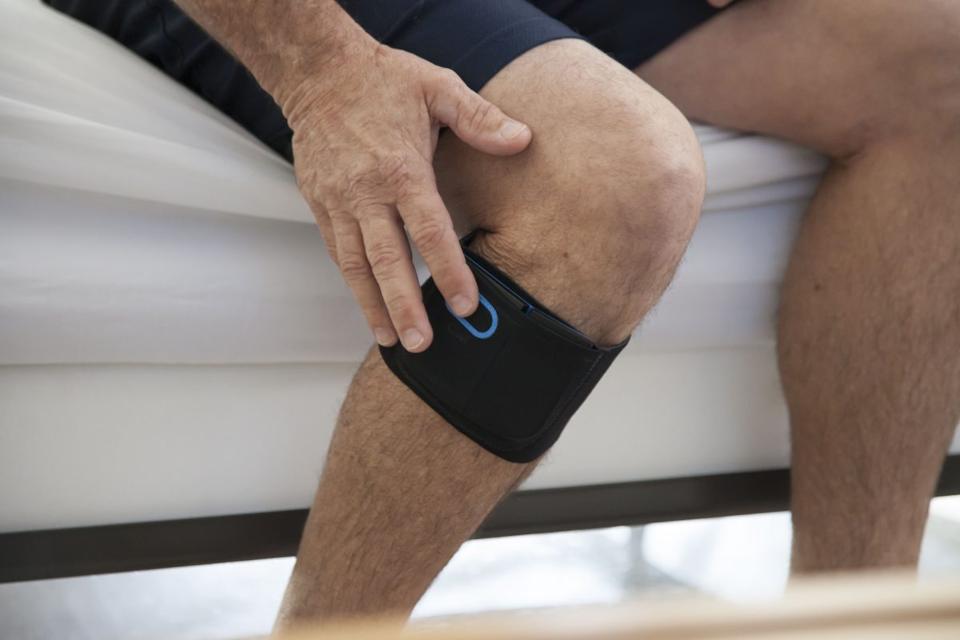
The opioid crisis has revealed another real ongoing problem: a lot of people have chronic pain. For example, Lady Gaga recently revealed that she suffers from fibromyalgia, a chronic pain condition that the Centers for Disease Control and Prevention (CDC) says afflicts 4 million people (or 2% of the adult population). This number may actually be an underestimate because determining the real number of people that have fibromyalgia can be a pain. Fibromyalgia is frequently under-diagnosed or misdiagnosed. Many people, including doctors, are not fully aware of the condition. People may try to maintain a “Poker Face” when afflicted with the symptoms of fibromyalgia, such as pain and stiffness throughout your body, fatigue, depression, anxiety, difficulties sleeping, memory problems, and headaches. Or they may attribute the symptoms to something else. Also, until the FM/a Test was approved by the U.S. Federal Drug Administration (FDA) in 2012, no simple test for fibromyalgia was available.
Enter the wearable movement. While some wearables may seem unnecessary (e.g., the No More Woof headset supposedly translates dog barks into English so that you can know when your dog is saying “what an idiot”), wearable technology for pain relief is an intriguing emerging area. It may sound a bit like a late night infomercial or something from a mystical healer: wear this band around your leg to decrease the pain throughout your whole body. But there is real scientific reasoning behind devices such as NeuroMetrix’s Quell that received U.S. Food and Drug Administration approval for over-the-counter use in July 2014.
The Quell device is a band that looks like a bit like blood pressure cuff that you wear around your upper calf. The device does not utilize any medications but instead generates electric signals that stimulate your body to produce naturally occurring substances (endogenous opioids) that can then inhibit nerve signals that lead to feeling pain. In other words, the device helps activate your body’s natural system for regulating pain.
Shai N. Gozani, M.D., Ph.D., Founder and CEO of NeuroMetrix, Inc.explained that “fibromyalgia is believed to result from problems with the central nervous system. There is no injury per se in the peripheral nerves. The balance between positive and negative signals regulating the pain neurons may be off. The nerve signals that inhibit pain signals may be decreased. The Quell device can help boost this part of the system.”
Of course, you don’t just put on the band and presto your pain disappears. As Dr. Gozani related, you typically have to wear the device for a week or two before noticing the reduction in pain. Typically, people will wear the band for 6 to 8 hours a day. The device periodically cycles on and off and can also collect information on your activity and pain levels to help you adjust the device and manage your pain. The device offers the option of tapping into the Quell Health Cloud, which stores data on the usage, sleep, pain levels and activity for many different users and thus can provide analysis that can in turn help with pain management.
Neurometrix reported that Quell contributed $3.0M out of NeuroMetrix’s $4.3M in revenue in the second quarter of 2017 and that they shipped their 100,000th Quell device in July 2017. Quell device shipments in the second quarter of this year were almost ten times what they were in the second quarter two years prior.
There are certainly many advantages of replacing medications with wearables. For example, addiction is less of an issue (e.g., wearing many bands all over your body probably won’t help). Finding and using ways to stimulate and modulate your body’s pain regulating mechanisms is certainly not a new approach to pain control. This is the basis of transcutaneous electrical nerve stimulation (TENS) and some physical therapy and alternative medicine approaches such as needling. But developing wearables so that you can go about your daily activities while receiving non-medication pain treatments is new and opens up a whole new avenue of potential ways to manage pain. Futhermore, having such devices interface with digital platforms could help better track pain management, combine treatments, generate data to provide scientific insights, and interface with other types of wearables. Who knows, someday maybe your dog can help you more with your pain management.
